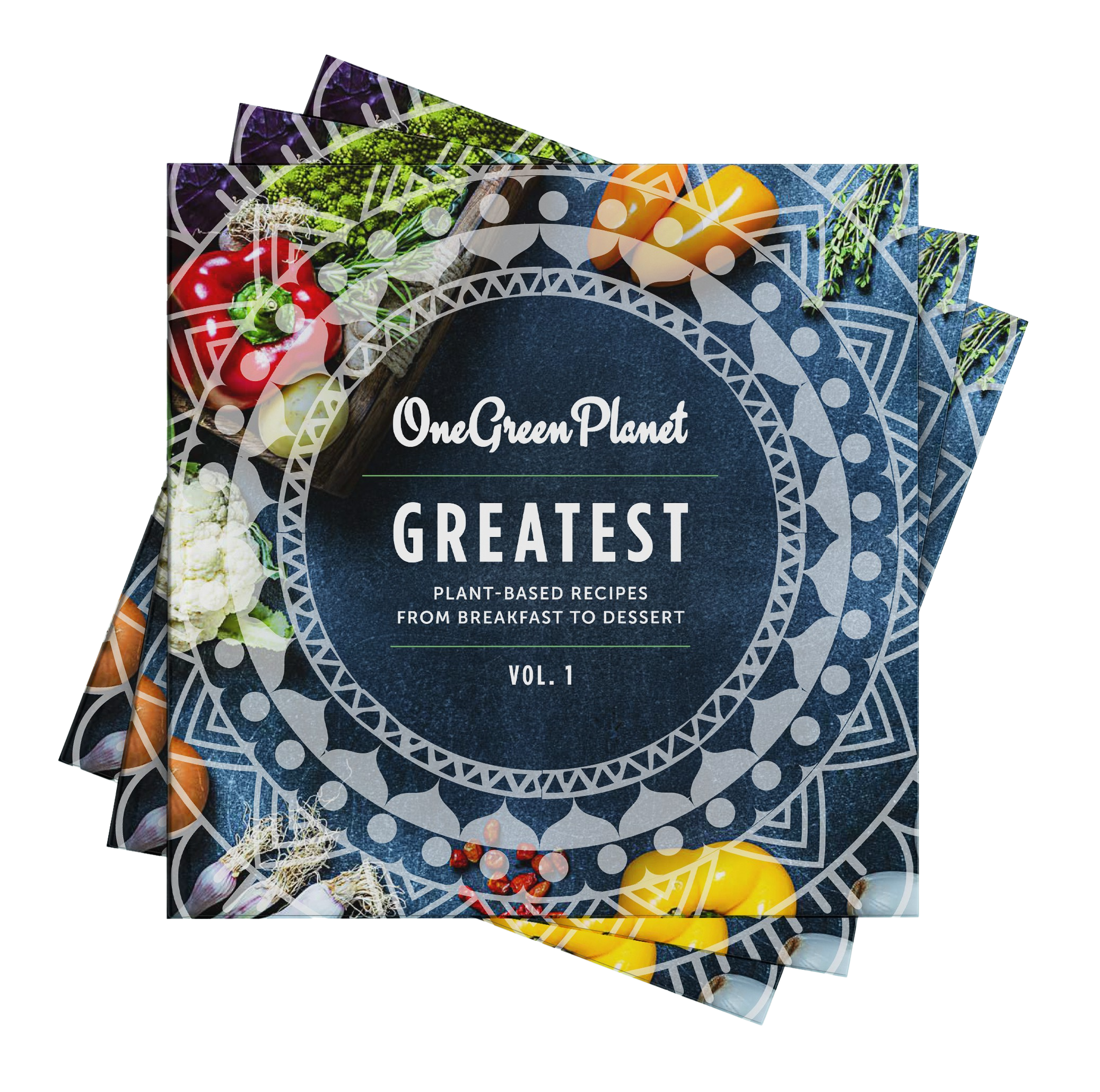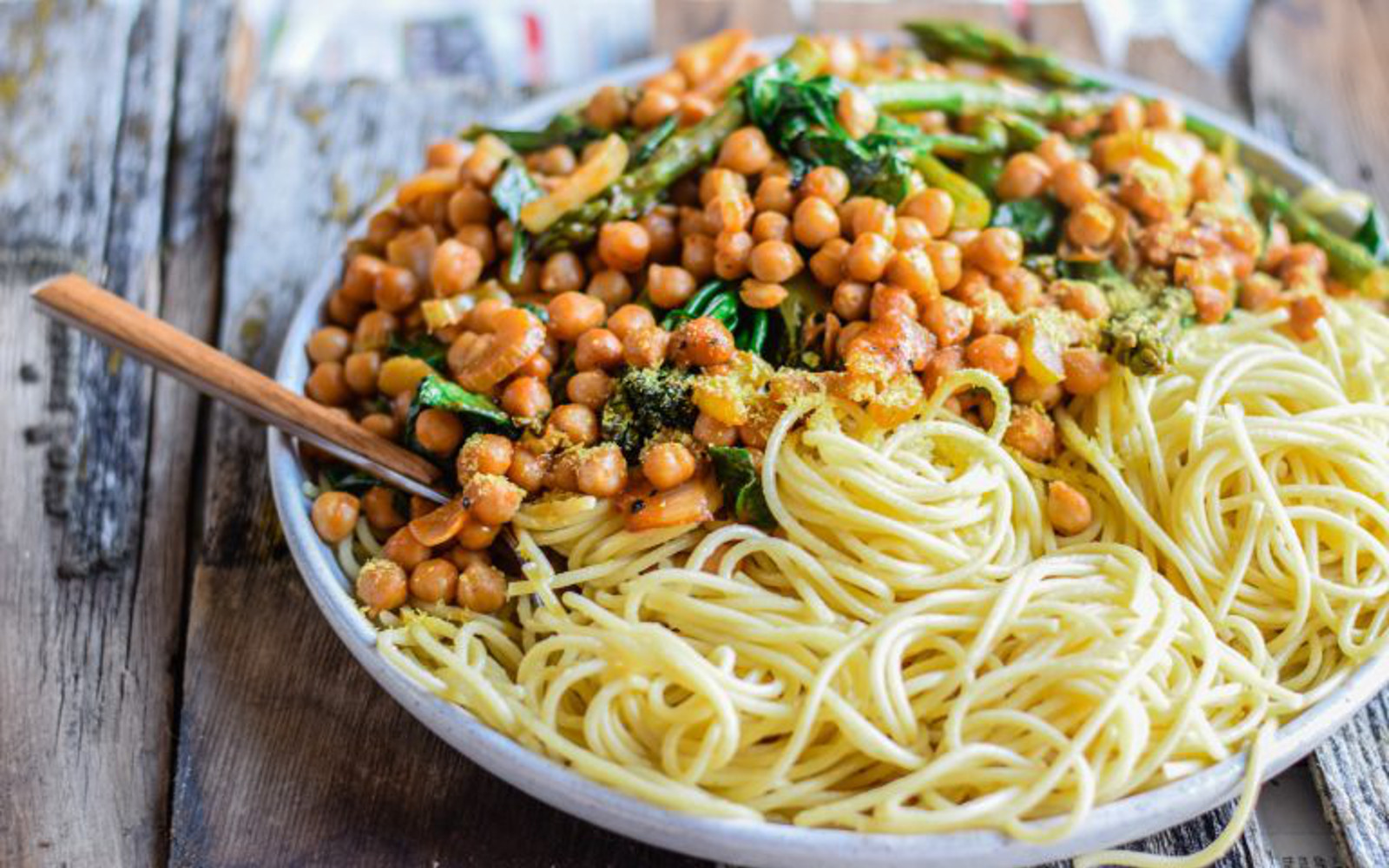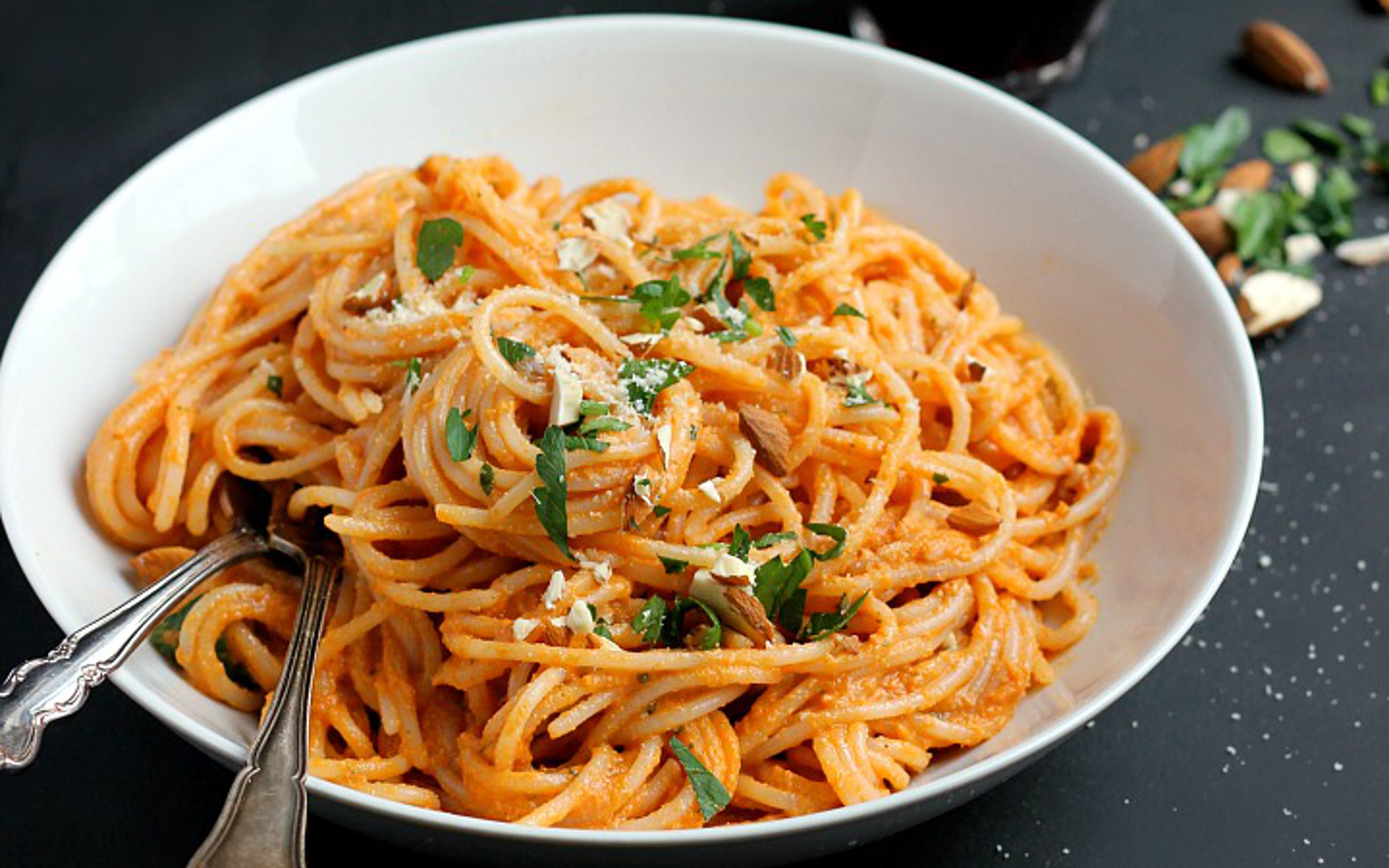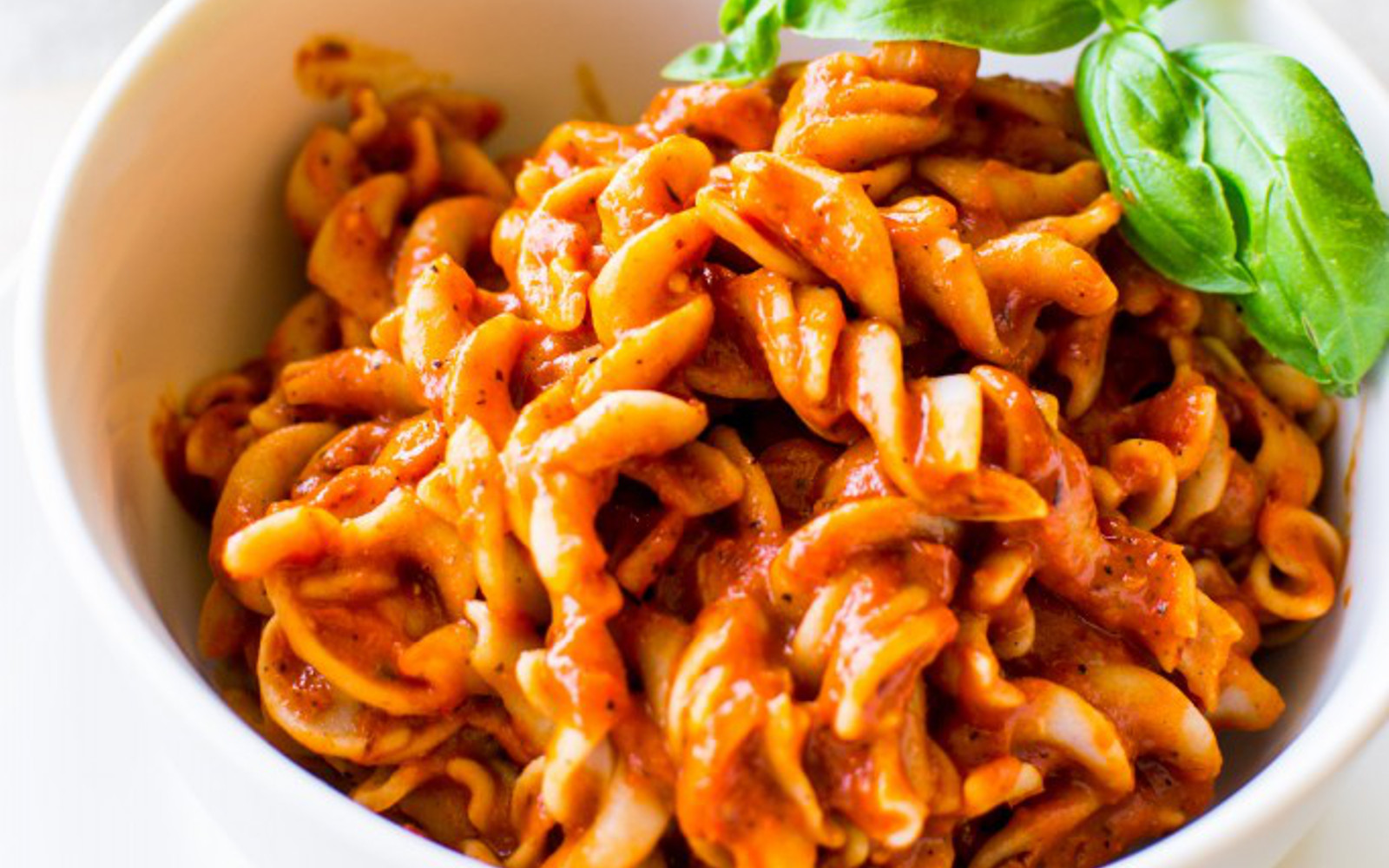How To Fix Hard Pasta

How hard can it be to make pasta? Isn't it just boiling water? That's what I used to think. To me, the hardest thing about making pasta was waiting for the water to boil (I can be very impatient). But there is more to a great pasta dish than just dumping noodles into hot water as anyone who has ever had a dish of gummy, sticky, bland spaghetti might tell you.
Having some Italian heritage, I feel a responsibility to know how to make great pasta dishes like the ones my mother made every single Sunday (along with matzoh ball soup for our Jewish side). I also have a duty to pass this knowledge along to others so you can all benefit from my many, many mistakes.
We highly recommend downloading theFood Monster App on iTunes — with over 15,000 delicious recipes it is the largest meatless, vegan and allergy-friendly recipe resource to help you get healthy!
These are the most common mistakes people make when cooking pasta (in order of the cooking process) and how to avoid them:
1. Cooking Pasta in a Pot That is Too Small 
Source: Spicy Vegetables and Chickpea Pasta
This is probably the most common mistake when cooking pasta. Perhaps you don't have a really big pot, or you just don't want to fill one up and wait for it to boil. Cooking pasta in a small pot means there won't be enough cooking water. When pasta is added to a small amount of water, the temperature of the water drops more significantly than it would in a large amount of water and it will take longer for the water to return to a boil. That means the pasta will end up sitting in non-boiling water for a good amount of time, resulting in gummy, clumpy pasta. Sticky pasta can also result from the pasta starch to water ratio being too high. The third reason you need to use a large pot is that long noodles won't fit in a small pot. Breaking spaghetti to fit into a small pot is considered a culinary crime worthy of extreme punishment.
Unless you are cooking a single serving of pasta (does anyone do that?), fill a large pot with 5-6 quarts of water per pound of pasta. The pasta needs space to move around in order to cook properly and come out with perfect texture.
2. Not Adding Salt to the Water 
Source: Brussels Sprouts Pasta Casserole
Another mistake often made with pasta is not adding salt to the cooking water or only adding a tiny amount. Pasta needs a lot of salt, but don't worry, you don't actually ingest all of it. Pasta doesn't absorb salt like potatoes do so most of the salt will stay in the cooking water. The salt is important because it has contact with the surface of the pasta and keeps it from getting slimy as it cooks. Pasta needs plenty of salt because salt "roughs up" the surface and keeps it from becoming slimy. This abrasive action is not necessary for fresh pasta, only dried, but the second thing salt does is season the pasta. If the pasta cooks in plain water, it will taste bland. Once the water has come to a rapid boil, toss in a tablespoon or two of salt. This will ensure that your pasta has the right texture and flavor.
3. Adding the Pasta to the Water Before it has Boiled 
Source: Homemade Orecchiette Pasta With Pesto
I think I have made this mistake more than others due to my impatience. Pasta has to be cooked in boiling water. As I mentioned above, if pasta sits in water that is not hot enough, it can become gummy and sticky. Let the water come to a rapid boil before adding the pasta. Once you have added the pasta, the temperature of the water will drop. Stir the pasta and let the water come back to a full boil. This will prevent clumpy noodles.
4. Adding Oil to the Water 
Source: Smoky Tomato Almond Pasta Sauce
This is a huge controversy in the pasta world. Many cooks add oil to the cooking water including a few famous chefs. The thinking is that the oil will keep the pasta from sticking together. However, if you use enough cooking water that is at a rapid boil and stir the pasta often as it cooks, it should not get sticky. Adding oil to the water makes the pasta slippery and then sauce will not adhere to the noodles. Cook the pasta correctly and there is no need for oil.
While we are on the topic of adding oil, some people toss cooked pasta with oil to prevent sticking. Don't do it. This will have the same result where the sauce will just slide off the pasta. To prevent cooked pasta from sticking, toss it with a bit of sauce right after draining it. If you aren't going to be eating the pasta for a while, run it under cold water to remove the starch and then reheat it in the sauce when you are ready to serve.
5. Not Stirring the Pasta 
Source: Pasta Mushroom Stir Fry
As soon as you add the pasta to the water, stir it with long tongs or a wooden spoon. Do this often while the pasta cooks. Stirring the noodles will prevent them from sticking together. Keep the pasta moving around the pot. It won't clump and it will cook consistently.
6. Undercooking or Overcooking the Pasta 
Source: Roasted Red Pepper and Tomato Pasta
To me, the only thing worse than undercooking pasta is overcooking it. Undercooked pasta is hard to chew but at least you can continue to cook it. Overcooked pasta is limp, gummy, doesn't hold its shape and there is no saving it. Either way, it's not a pleasant experience. No matter how long the package says to cook it, the best way to know when the pasta is ready is to test it at least a minute or two earlier than what the directions state. Despite what you may have seen in the movies, you don't need to throw the noodles at the wall and see if they stick to know they are ready. The best test is to taste it. The pasta is ready when it is "al dente" (to the tooth) or slightly firm. It may seem undercooked to you, but remember, the pasta will continue to cook while it drains and in the sauce so you want to keep the cooking shy by two minutes or so. Keep in mind that gluten-free pasta usually takes longer to cook than those containing gluten, and fresh pasta only takes a few minutes to be ready.
7. Rinsing the Pasta With Water 
Source: Creamy Avocado Pasta With Cherry Tomatoes
Many people rinse their pasta after cooking it. The only thing this does is remove the starch that helps hold and absorb the sauce. You not only wash away the clinginess, but also the flavor of the pasta. When the pasta is al dente, drain it in a colander. Shake the colander to get rid of all the excess water and continue on with the recipe. The only times it is acceptable to rinse pasta is when you are making a cold pasta salad or as mentioned above, if you are not serving the pasta right away and you want to prevent it from getting sticky.
8. The Pasta and the Sauce Don't Match 
Source: Creamy Leek and Asparagus Pasta
One last piece of advice is to choose the right pasta shape for the sauce you are making. If you are serving a light sauce such as garlic and oil or a smooth marinara, choose a long, thin noodle such as angel hair or spaghetti. Thicker sauces like an Alfredo go well with thicker, long noodles such as fettuccine. Chunky sauces, especially those with lots of veggies, go best with shorter pasta such as penne or rotini. Choosing the right pasta for the sauce is important for a pleasurable eating experience…and just keeping the food on the fork.
When pasta is cooked correctly, it can become the base of an endless number of decadent dishes. Here's hoping these tips help make your next pasta dinner a meal to remember…for good reasons. Mangia!
Now, go check out these pasta recipes here on One Green Planet.
Learn How to Cook Plant-Based Meals at Home!
Reducing your meat intake and eating more plant-based foods is known to help withchronic inflammation,heart health,mental wellbeing,fitness goals,nutritional needs,allergies,gut health, andmore! Dairy consumption also has been linked to many health problems, including acne,hormonal imbalance,cancer,prostate cancer and has manyside effects.
For those of you interested in eating more plant-based, we highly recommend downloading the Food Monster App — with over 15,000 delicious recipes it is the largest plant-based recipe resource to help reduce your environmental footprint, save animals and get healthy! And, while you are at it, we encourage you to also learn about theenvironmental andhealth benefits of aplant-based diet.
Here are some great resources to get you started:
- Weekly Vegan Meal Plans
- Plant-Based Health Resources
- Plant-Based Food & Recipes
- Plant-Based Nutrition Resources
- The Ultimate Guide to Plant-Based Nutrition
- Budget-Friendly Plant-Based Recipes
- High Protein Plant-Based Recipes
- Plant-Based Meal Prep
For more Animal, Earth, Life, Vegan Food, Health, and Recipe content published daily, subscribe to theOne Green Planet Newsletter! Lastly, being publicly-funded gives us a greater chance to continue providing you with high-quality content. Please consider supporting us by donating!
Being publicly-funded gives us a greater chance to continue providing you with high-quality content. Click here to Support Us
How To Fix Hard Pasta
Source: https://www.onegreenplanet.org/vegan-food/pasta-how-to-avoid-common-cooking-mistakes/
Posted by: hawkinsthatted.blogspot.com

0 Response to "How To Fix Hard Pasta"
Post a Comment